When was the last time you cleaned your coffee maker? Do you even need to? What kind of coffee maker cleaner should you use? What you read here today might surprise you.
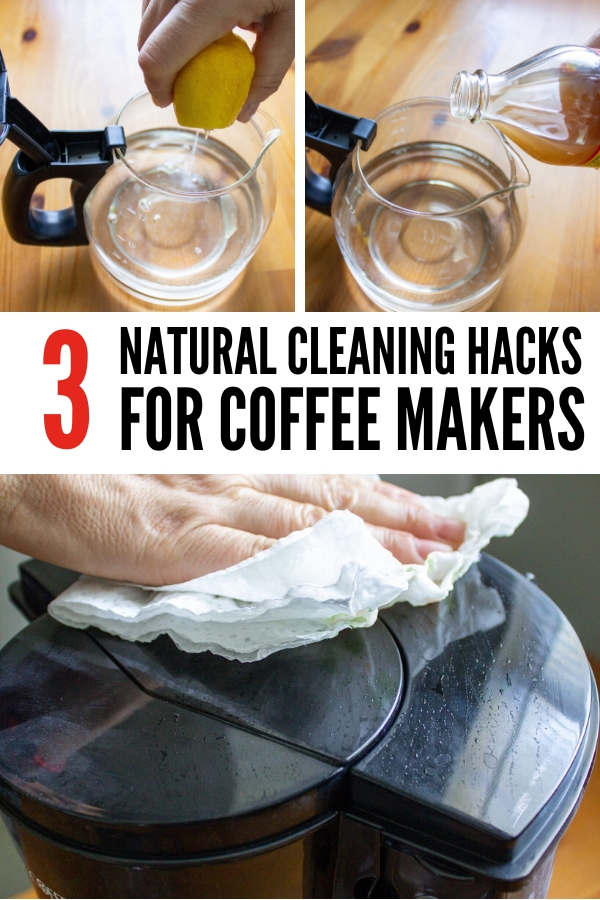
Ahhhh, that morning cup of brew. For so many people (including me), it’s the way to jump-start the day and shake the cobwebs from sleep out of our brains.
Your faithful coffee maker is the means to make this steaming hot cup of deliciousness a daily ritual. Every day, without fail, it does its job.
Until one day when you notice that your coffee just tastes wrong. It’s not the beans – you know you only bought the highest quality single origin coffee beans from a reliable producer like Cafely – so what gives?
Why Does My Coffee Suddenly Taste Bad?
Have you noticed lately that your morning cup of java has started to taste bitter or just plain terrible?
Over time, mineral deposits (also known as scale) and residue from coffee beans collect in your coffee maker (just rinsing out the coffee pot won’t get rid of the residue). Once there is enough scale and residue buildup, it will affect the taste of your coffee.
Why Should I Clean My Coffee Maker?
As your coffee maker starts to accumulate scale and residue, not only do they affect the taste of your coffee, but they also make it harder for your coffee maker to do its job.
That build-up will start to clog up your coffee maker’s components which can hinder your coffee maker’s drip operation. This may cause a narrower water channel and force your coffee maker to work harder (and less efficiently) to brew coffee.
In addition, leftover coffee grounds create the perfect moist environment for yeast, mold, and bacteria to grow.
All of these factors can come together to make your morning coffee taste awful.
Do you know how dirty your coffee maker is? In fact, when was the last time you really cleaned it?
Hint: it’s probably much dirtier than you realize, and I’ve got news for you – simply rinsing out the carafe after making coffee isn’t enough.
The good news, though, is that occasionally using a simple cleaning process will eliminate mineral buildup, remove hard water spots, and get rid of coffee oils. And once it’s all nice and clean again, your coffee will taste fresh and amazing, and your machine will operate like it’s brand new.
How Often Should You Clean Your Coffee Maker?
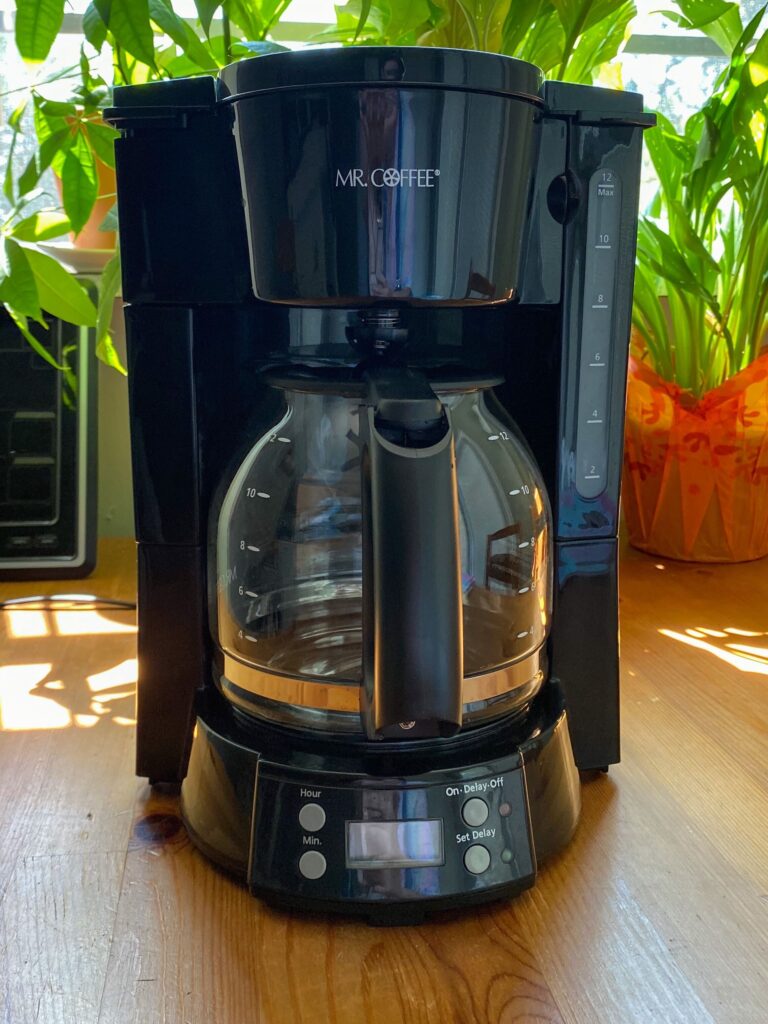
There are some models of coffee makers that have a cleaning cycle (check your manual). Some other models have some sort of indicator to let you know that your machine is dirty.
However, for anyone who doesn’t have one of these features, try to do a general maintenance cleaning of your coffee maker after every use. Remove the used coffee grounds and rinse out the brew basket and the coffee pot. Leave your coffee maker as open as possible to allow time to dry (and inhibit bacteria, mold or yeast growth).
In addition to your daily maintenance, do a deeper, descaling cleaning process once a month to rid your coffee pot of bacteria, mineral deposits and oily residue. This process may sound complicated, but it’s really quite simple and essential to keep your coffee maker happily humming along.
What is the best way to clean a coffee maker?
At this point, you may be wondering how to clean a coffee pot. The best way to clean your coffee maker is remarkably similar to the process you use to brew your java.
While there are many commercial coffee maker cleaners you can purchase to clean your coffee pot, all you really need is a DIY coffee maker cleaner from items you have right at home!
Coffee Maker Cleaner Tip #1: Clean Your Coffee Maker With Vinegar.
Why vinegar? The acidity in vinegar makes it very effective at cutting through grease and grime – and mineral deposits. It’s also a great disinfectant and deodorizer. Plus, it’s natural, so using vinegar avoids the use of harmful chemicals.
Here’s the process for cleaning your coffee maker with vinegar:
1. Empty Your Coffee Pot and Dust the Outside
Remove and throw away any used filters or coffee grounds. Then take a damp cloth to wipe the outside of the coffee pot.
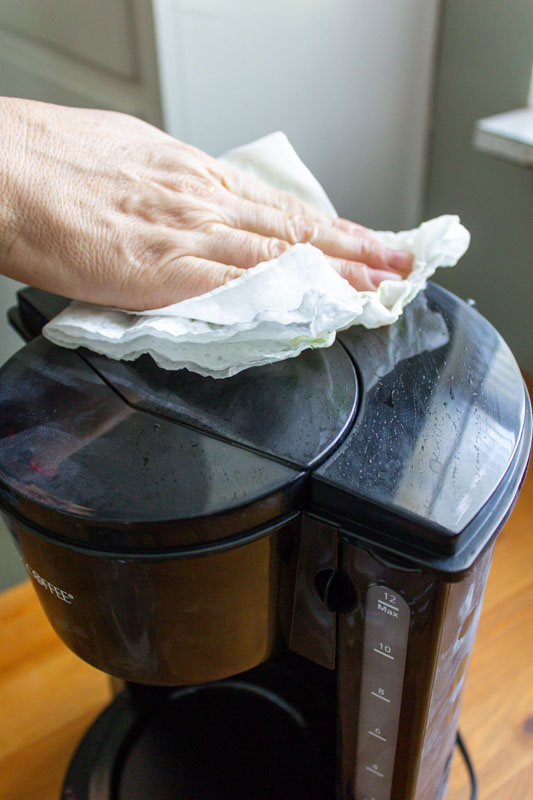
2. Mix Up Your DIY Coffee Maker Cleaner
Combine equal parts of vinegar and water.
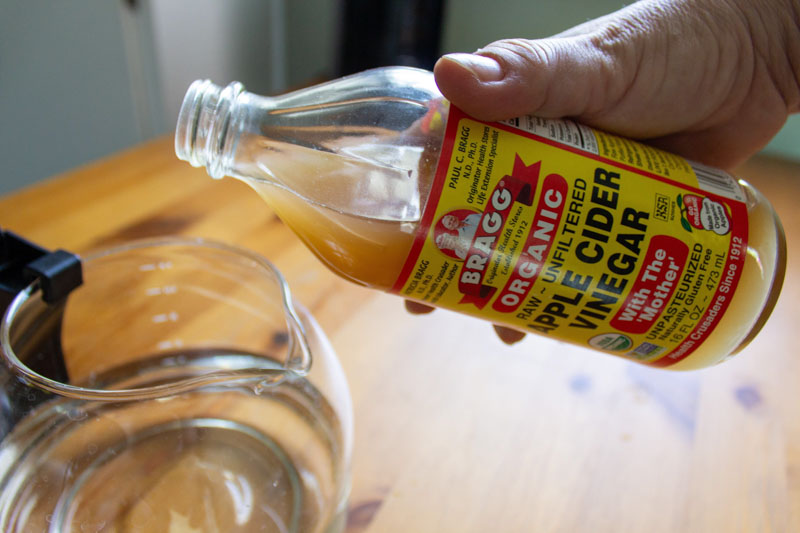
3. Pour Your Cleaning Solution into the Water Reservoir
Fill the reservoir to the “fill line” with your DIY coffee maker cleaner. I have found that the easiest way to do this is to fill the carafe halfway with vinegar and the rest of the way with water.
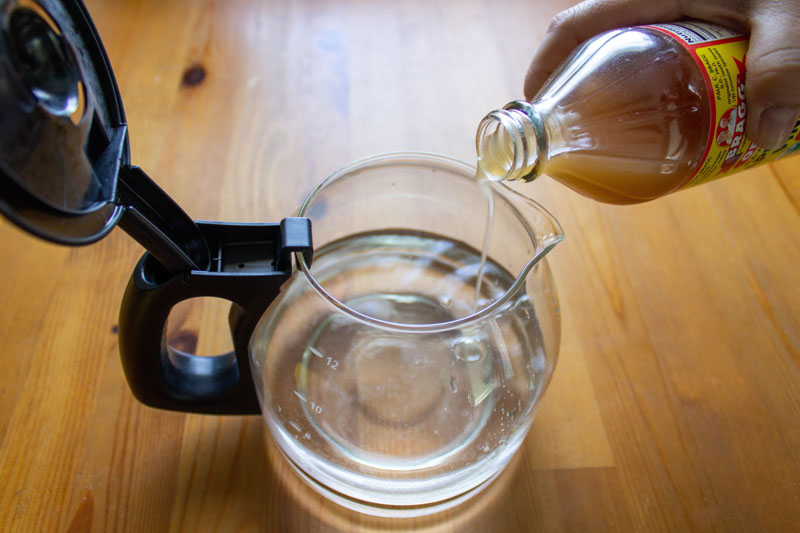
4. Start a Brew Cycle
When the brew cycle is about halfway complete, turn off the coffee maker and let the cleaning solution sit in the machine for one hour.
5. Complete the Brew Cycle
Once an hour has passed, turn the coffee maker back on and finish the brew cycle.
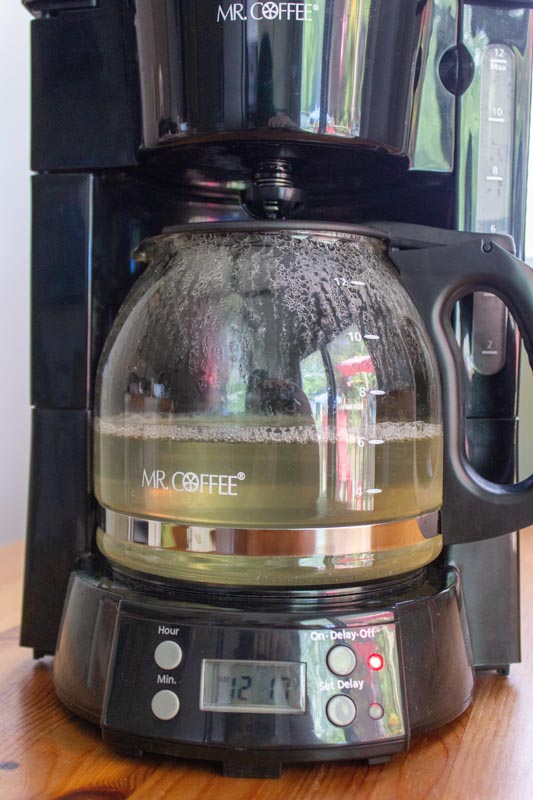
6. Run a New Cycle
Once the brew cycle finishes, discard the DIY cleaning mixture and fill the water reservoir with plain water. Run another brew cycle with only the water. Repeat this process again, allowing the machine to cool for a bit between brew cycles.
It’s important to run the 2 extra cycles with plain water to make sure that your coffee doesn’t taste like vinegar.
7. Wash the Carafe and Filter Basket
Use hot, soapy water to thoroughly clean the carafe and filter basket. Let them dry. Then reassemble your coffee maker and enjoy fresh-tasting coffee!
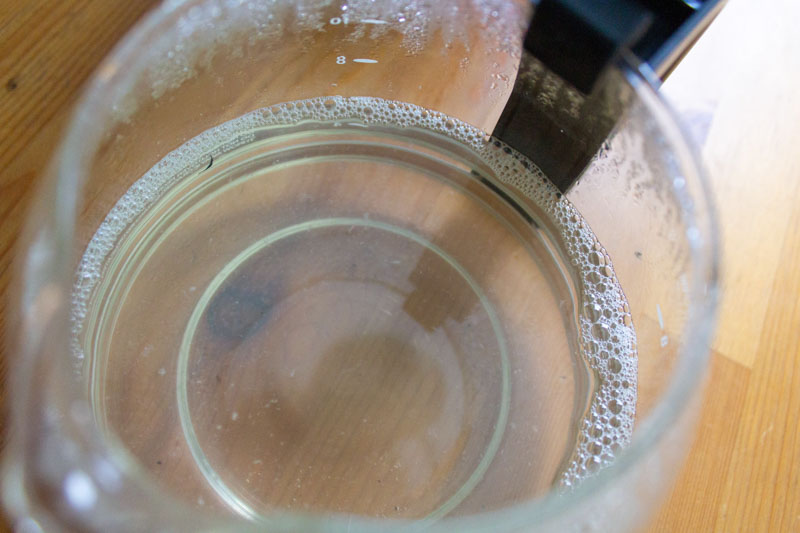
Tip #2: Swap Out the Vinegar for Lemon Juice
If you don’t have vinegar (or don’t like the smell of it), lemon juice is a great substitute and acts in almost the same exact way. Follow the process outlined above but use lemon juice in place of vinegar.
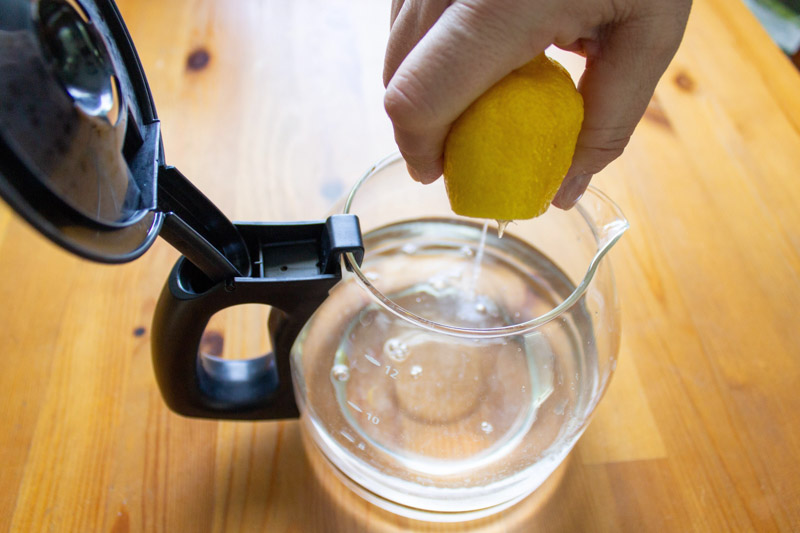
Tip #3: Citric Acid
Citric acid is less acidic than both vinegar and lemon juice, so you won’t need to do extra plain rinses afterwards to ensure you don’t have leftover tastes. Simply dissolve 1 tablespoon of citric acid granules into a half gallon of water and follow through Step #5 of the process outlined above.
Because citric acid is less acidic, you may need to run another cycle with the citric acid solution but then you are done. No need to run a rinse cycle as citric acid won’t leave unwanted tastes behind.
You will not likely use the entire half gallon solution that you made. Citric acid won’t go bad, so hang on to the rest of your solution and use it the next time you need to clean your coffee maker.
With these three hacks for cleaning your coffee maker in your back pocket, you can easily keep your coffee maker clean and enjoy fresh, amazing-tasting coffee every morning.
Read More Cleaning Tips:
- Stainless Steel Cleaning Hacks Every Homeowner Needs to Know
- Amazing DIY Natural Cleaners Using Essential Oils
- 15 Easy DIY Cleaners For Every Room in Your Home

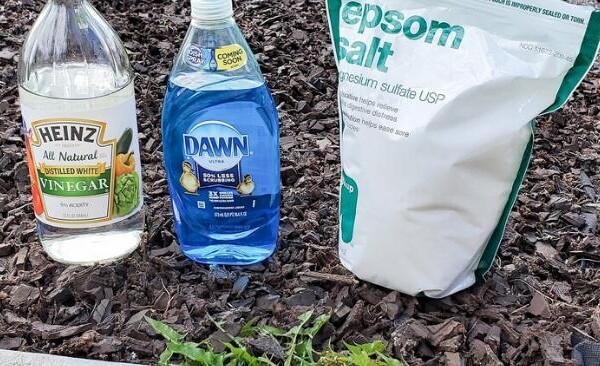
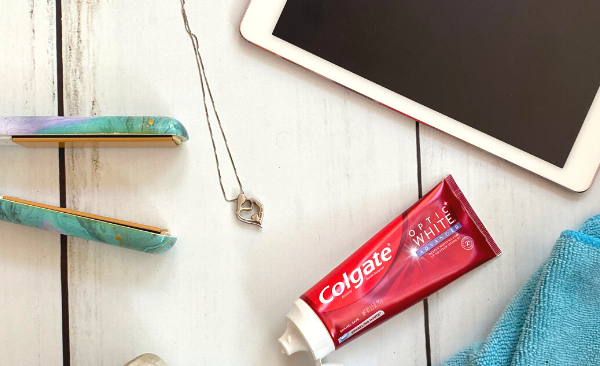
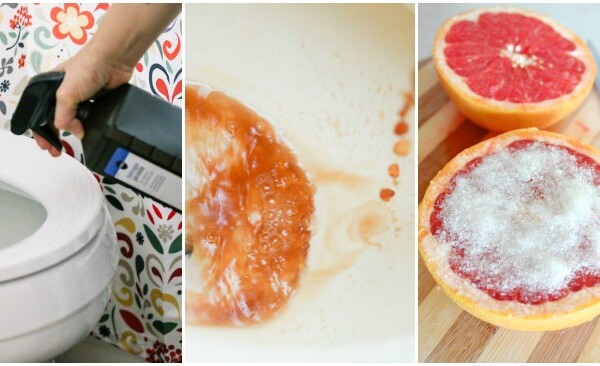
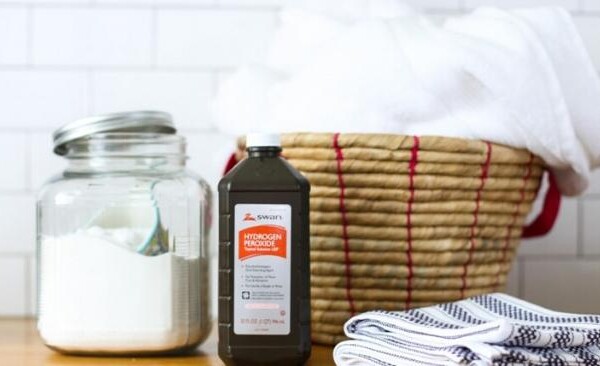




0